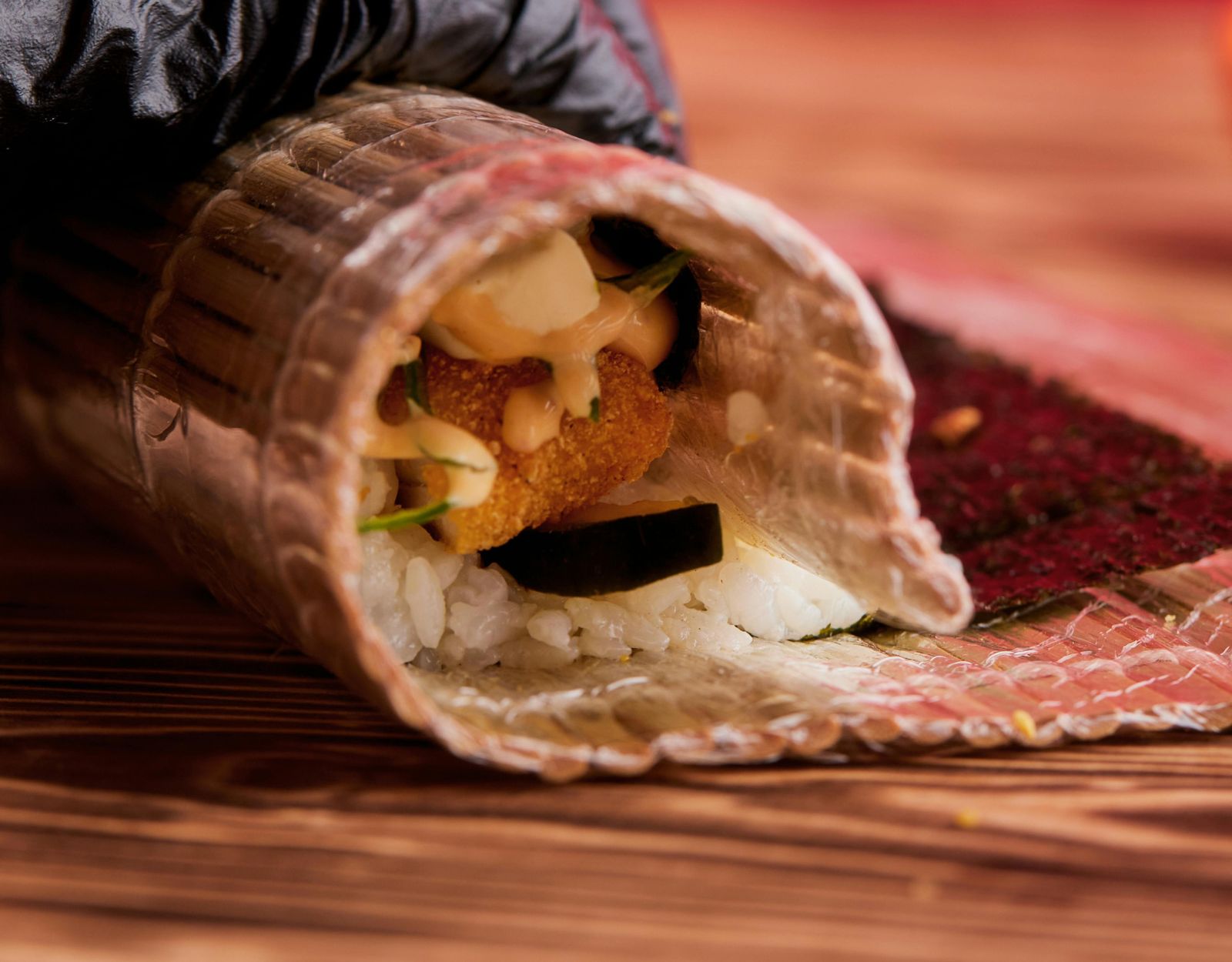Splendid Sushi: Hacks to Make Sushi at Home
Everybody loves sushi and on World Sushi Day, we’re going to show you ways how to make sushi at home.
Sushi is almost everyone’s favorite Japanese treat. The freshness of the ingredients, the vibrance of the seafood, and they’re all lined up pretty like a culinary rainbow on a plate — visually and taste-wise, it’s scrumptious! But when our favorite Japanese restos are closed for the day or we’re hit with a wave of nostalgia from our last trip to Japan, sometimes, we want to try making sushi ourselves at home!
Although it’ll take years to completely replicate a sushi chef’s skill and artistry, here are some hacks we can do at home to get us started in making the vibrant Japanese dish.
1. Wrap the bamboo mat with a clingwrap for easier cleaning.

Bamboo mats are one of the main tools of a sushi chef in rolling up our favorite maki and with the amount of sushi they make in a day, we’d think it’d take them longer to wash and clean their tools especially because of the sticky rice. But what we can do to make it easier is to wrap the bamboo mats in clingwrap to prevent the mat from degrading after constant washing plus, the rice is easier to brush off!
2. Maintain your fish filleting knife.
Different knives mean different edges for different kinds of meat. And for fish, there’s something known as the fish fillet knives — these usually have edges that help trim the scales, remove the guts, and cleanly slice through the meat without leaving those ugly jagged cuts. But if we start using it for everything, it’ll definitely blunt the blade.
Maintain the knives by keeping them in their sheathes, washing and drying them well, and most of all — don’t use them for any other ingredient. Some ingredients like garlic, onion, and other acidic ingredients have scents and flavors that can cling to the steel.
3. Rinse the rice as little as we can.
The stickiness of sushi rice doesn’t just come from the sugar and the rice vinegar. It also comes from the existing starch. What some people do is that they only rinse it once or twice so that when they cook the rice, it remains sticky. However, washing the rice only once can feel quite risky so make sure to check for bugs or any other pests.
4. Know the English, Japanese, and Tagalog translations of the fish.
Families are familiar with two fishes for sushi: Tuna (Maguro) or Salmon (Sake). But the scope of sushi is much larger with that, even including fishes like flounder (Hirame), mackerel (Saba), squid/ cuttlefish (Ika), eel (Unagi), and scallop (hotate). The best part is, some of these fishes are native to Philippine waters like the Dapa which is a kind of flounder.
Knowing what the Tagalog name is for some of these fish helps us know which ones we can fillet into sushi. Here’s a fish translation guide to keep in handy!
5. Cleaning fish: mirin and water
Unfortunately, the waters of the Philippines aren’t as clean as those of Japan. So cleaning the fish meat may feel a little weird at first but it’s to make sure nobody gets a stomachache after. While most Filipinos use calamansi and pepper to remove the “fishy” (or lasang lupa) taste, we can soak the fish in a mirin and water mixture so that the meat doesn’t come out too tart.
6. Know your sushi: Nigiri, Temaki, and Maki

Sushi can be prepared in three different ways. Nigiri, also the simplest looking one, relies much on how sticky the rice is and how well-filleted the fish is. It’s rolled by hand and usually has a dab of wasabi beneath the fish. It’s the easiest to make in the sense that we just have to mold it into a log-like shape.
Temaki is shaped like a cone, kind of like a crepe that we usually eat on the go. To make this one, we only put the filling on one side so we could roll it into the shape of a cone.
Maki needs some knife work as we tightly roll it into a tube and slice it into 1-inch thick pieces. While there are some devices that make it easier, Japanese sushi chefs usually use the bamboo mat. They sometimes put a bit of sushi rice on the edge so the nori sticks and then tuck the sushi in tightly while rolling to prevent it from falling apart while they’re slicing it into bite-sized pieces.
So if we’re just starting out, we believe nigiri is the best way to start. Two ingredients and then slowly add as we go.
7. Keep a bowl of water and a small towel near while making sushi.
The frustrating part about making sushi is when everything sticks to our fingers. So what some Japanese chefs do is they keep a small bowl of cold water and a towel nearby to wash their fingers. They dip their fingers in the water, rub them together, and then dry them before wrapping them again. Others just throw on plastic gloves to reduce the amount of time washing and cleaning.
Sushi is art on a plate!
What makes sushi beautiful is not just the freshness of the ingredients but also the skill it takes to make. The blade must be sharp enough to make those smooth fillet slices so it doesn’t break upon eating and most of all, the way the fishes are filleted needs to be done well so there are no bones! Although we might not be able to replicate the way they do it in Japan, these hacks make sure we can at least deal with our sushi cravings at home and ensure ourselves that it’s clean.
More home-cooking hacks for anything besides sushi making?
6 Easy And Tested Sustainable Home Cooking Hacks
Slice and Dice: 7 Essential Knives for All Your Cooking Needs
8 Sushi Delivery Places for Your Quick Japanese Fix









